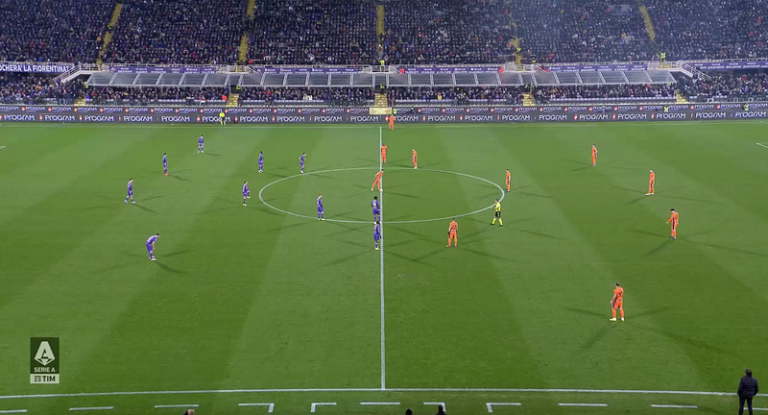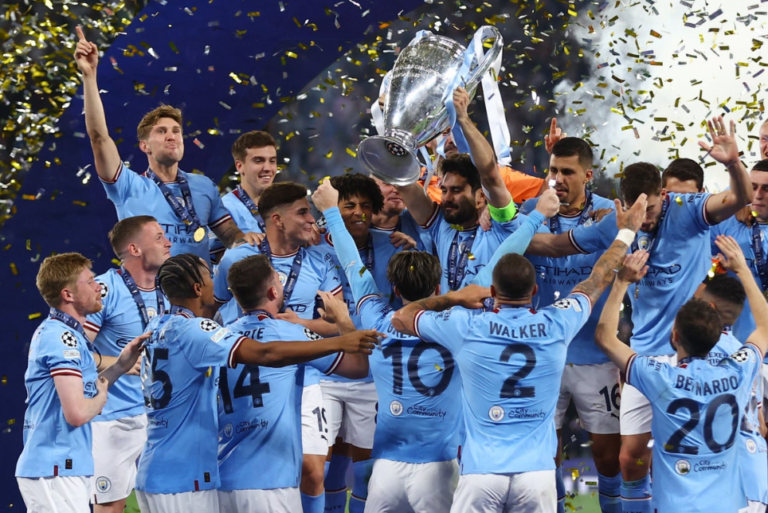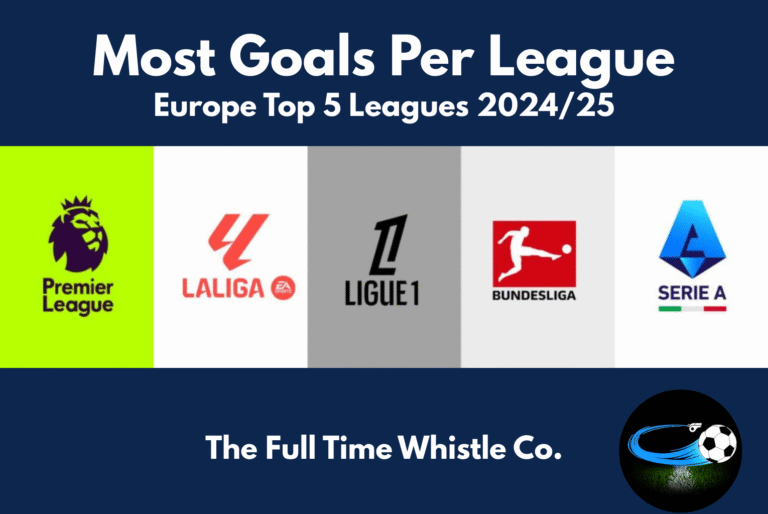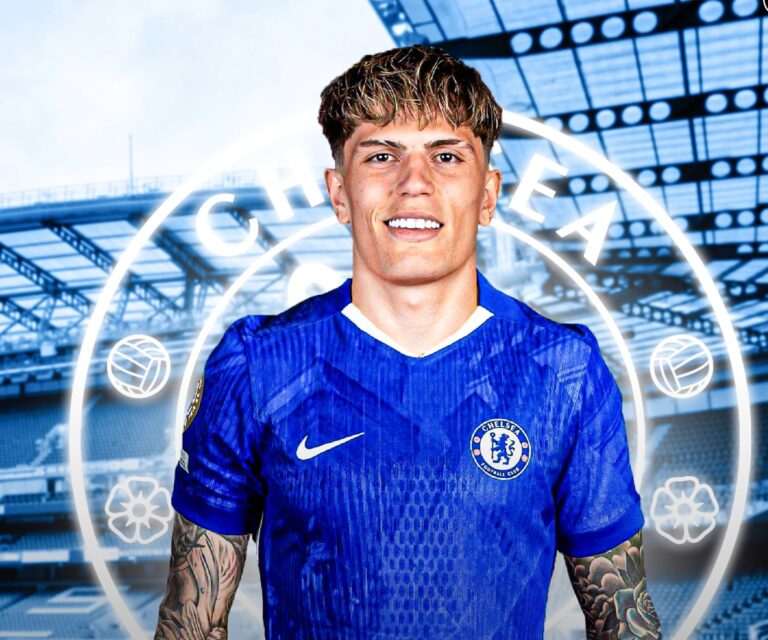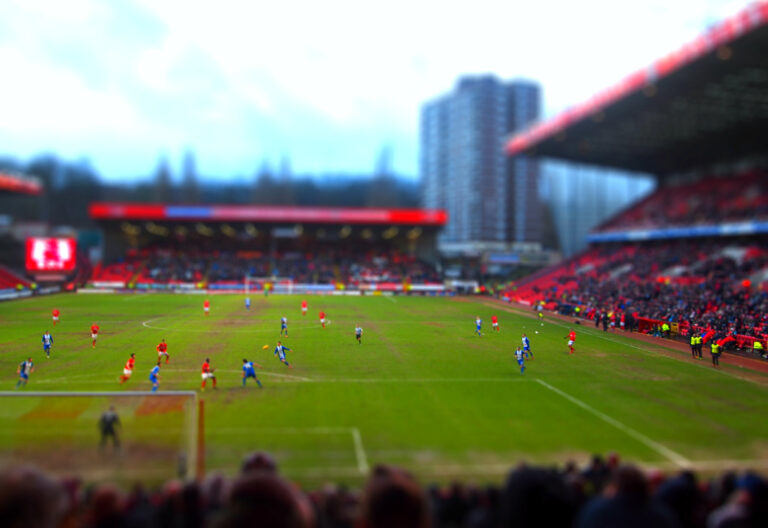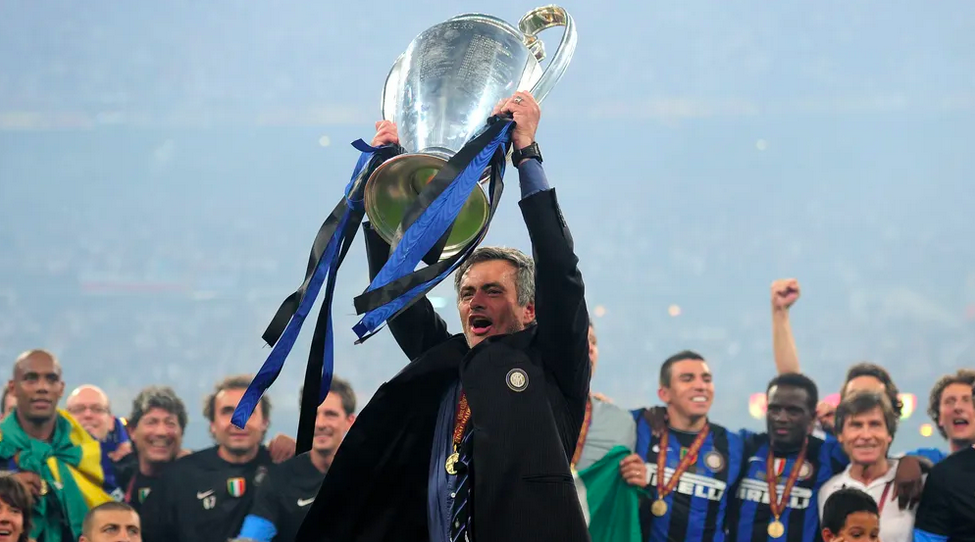
Road To The Final
Inter Milan faced Bayern Munich in the final of the UEFA Champions League at the Santiago Bernabeu in 2010.
The Italian side under Jose Mourinho completed a miraculous win against Pep Guardiola’s formidable Barcelona team in the semi-finals. Inter defeated Barcelona 3-2 over the two legs despite being down to ten men against arguably the greatest passing team of all time. It was a defensive masterclass from Jose Mourinho as he guided Inter to the Champions League final.
Their opponents, Bayern Munich, were coached by one of Mourinho’s mentors, Louis Van Gaal, another manager known for playing football that is possession-based. Bayern won the semi-finals against Lyon 4-0 and in the previous knockout rounds, they eliminated Fiorentina and Manchester United by winning on away goals, with both rounds finishing on an aggregate score of 4-4.
Also read: Jose Mourinho Masterclass On The Coaches Voice: Inter 3 Barcelona 1 UCL semi-finals 2010
How Did The Teams Set Up?
Louis van Gaal decided to go with a 4-4-2 with Lahm and Bastuber as fullbacks. Demichelis and Van Buyten partnered at the heart of the defence, and Jorg Butt starting in goal. Arjen Robben and Altintop were on the wings, with Schweinsteiger pairing up with Van Bommel in the center of the four-man midfield. While Olic started alongside a young Thomas Muller up front.
Jose Mourinho started with a 4-2-3-1 with nearly seven defensive-minded players. Thiago Motta was suspended for the final as Zanetti came into the midfield to partner Cambiasso. Maicon and Chivu were the fullbacks, with Lucio and Samuel at the heart of arguably the best defence of that era. Samuel Eto’o and Pandev provided the offensive width and pace, while Milito started upfront with Wesley Sneijder behind him.
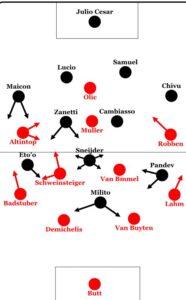
Bayern’s Attacking Tactics
When in possession, Bayern played in a 4-2-3-1 shape with Olic as the sole striker. Muller would drop deeper to play in the hole and provide creativity to Bayern’s attacks. Both Schweinsteiger and Van Bommel held their positions, with Schweinsteiger moving higher on the left occasionally.
Lahm and Bastuber pushed higher, with both wingers Robben and Altintop staying in wider positions. Muller tried to create confusion in Inter’s defensive and midfield third by dropping deeper while Olic made runs towards the wider areas.
However, Bayern’s possession-based strategy was not working at all as they struggled to pass through Inter. Inter’s low block was so well drilled that Bayern just kept playing square passes from side to side and waited for a gap to open up.
Manchester United fans could relate to this situation as Bayern were keeping significantly more possession than Inter that night but lacked any sort of dynamism in their attack. So it was easy for the Inter players to hold their positions and force Bayern to play harmless passes.
As seen in the pass maps of each player in the game on the night, Bayern were forced to play more towards their right flank because Mourinho overloaded Inter’s left flank to exploit the space when Robben and Lahm pushed up.
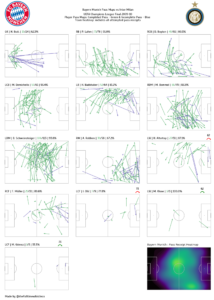
Whenever a team struggles in a situation like this, they need a moment of individual brilliance from one of their most talented players. Bayern’s most threatening attacks came from Arjen Robben down the right side.
Due to the lack of vertical passing options, Bayern were getting the ball to Robben, who was in a 1v1 or a 1v2 situation with the Inter wingers also tracking back to help the fullback. This way of penetrating the Inter defence was looking effective as Robben was putting in some dangerous cutbacks into the box or taking a few shots himself from his typical range.
Although this attacking method was somehow working for Bayern, it also created a massive issue for Bayern regarding defensive transitions. With Inter sitting deep in their half, Bayern’s fullbacks and midfielders were all pushing higher to get into scoring positions, leaving the centre-backs exposed. Jose Mourinho is a master at getting his opponents in these situations before taking advantage of them.
There was another pattern that was troubling Inter’s right of defence as the right-back Maicon was dragged out of position due to the movement of Altintop. Altintop was coming inside into the left half-space, creating space for Bastuber to overlap and put crosses in. Meanwhile, Schweinsteiger occupied the attention of Inter’s right-winger or midfielder, which was leaving Badstuber unmarked.
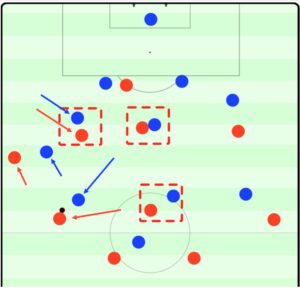
Bayern tried a lot but were left frustrated by the robust Inter defending, and Van Gaal’s side also left their center backs exposed to Jose’s incredibly fast counter-attacking side.
How Did Jose Expose Bayern Defensively?
Explaining Jose Mourinho’s tactics are never too hard as we all know about the facets of the great Mourinho teams. However, his ability to control the opposition without the ball is a hallmark of all his world-beating sides. Whenever it looks like Mourinho’s team has no control of possession and the game, his players know exactly what they are doing.
Against Bayern in this final, he almost allowed Bayern to dominate the ball in Inter’s half in order to get Bayern as higher up the pitch as possible to eventually counter-attack using the space in behind.
All of this sounds quite simple, but it’s a method that takes every player being on the same page to get it right. If one player is not on the same page, the whole plan could get destroyed, especially when you are up against a team of Bayern’s calibre.
In terms of the attacking movements, Inter’s most important player was Sneijder. He was constantly involved in everything Inter wanted to do offensively. His quality of handling the ball in tight spaces and under pressure was key for Inter as it gave their players more time to get out of the blocks.
He was also significant in providing passing lanes that would break Bayern’s lines. This is what Muller had to do for Bayern, but Sneijder was playing with a lot more freedom, allowing him to use his creativity.
Sneijder would move into half-spaces, receive the ball and turn before penetrating the Bayern backline and would also make a few runs in behind when Milito was coming short. As Bayern were playing a 4-4-2 while defending, it confused the players when it came to stopping Sneijder.
Sneijder also moved a lot into the left half-space repeatedly and got closer to Pandev to make it harder for the Bayern players to control that area of the pitch.
Also, Lahm was the more attack-minded full-back and would continuously overlap Robben who would cut inside, leaving a lot of space for Inter to target Bayern’s right flank.
As seen in the Inter players’ pass maps on the night and the heatmap at the end, Mourinho overloaded Inter’s left flank to exploit the space in behind Robben & Lahm’s overlapping runs. Although Inter barely had possession of the ball, they countered with pace & precision and incisive breakaways to score their goals on the night.
After Inter won the ball back in their defensive third they would quickly release the ball and counter with Eto’o, Milito & Sneijder from their left flank i.e. Bayern’s right flank as soon as Lahm & Robben pushed up.
The second goal also came from that area of the pitch as Van Buyten was left exposed against Milito. Jose targeted Bayern’s right side, resulting in Bayern focusing on their right side of defence which meant that Eto’o was left in a lot of space on the far side. This pass map and heat map give us a better idea about how Jose wanted his side to attack against the possession-based Van Gaal team.
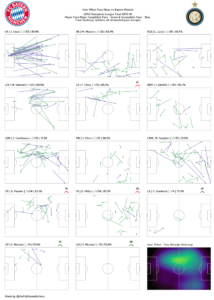
Inter’s first goal was so simple that it will always embarrass Bayern fans while looking at their defending. It was a straight long ball from Julio Cesar, brought down by Milito as he headed it into the path of Sneijder.
Milito then made a run in behind while Van Buyten was standing in no man’s land. Sneijder played a brilliantly weighted pass to Milito, whose finish was exquisite.
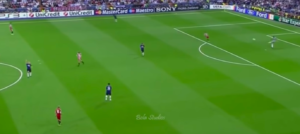
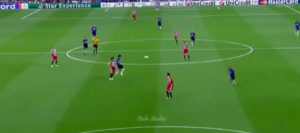
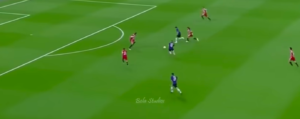
The second goal came through some excellent transition play from Inter. Bayern were on a counter-attack when they gave the ball away, and their defenders were left exposed as Sneijder picked up the ball in space. The Dutchman passed it to Eto’o, who quickly played it into Milito, who was 1v1 against Van Buyten. The Argentinian easily got beyond the defender before executing another world-class finish to double Inter’s lead.
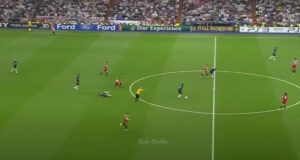
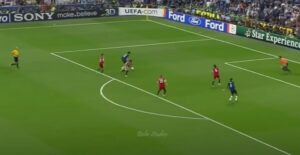
Jose Mourinho’s celebrations after the first goal were slightly subdued, but he celebrated the second goal with his usual energy as it took Inter closer to the Champions League triumph.
Also read: Jose Mourinho Masterclass On The Coaches Voice: Inter 3 Barcelona 1 UCL semi-finals 2010
Conclusion
Bayern Munich were not too poor, but Inter were just better in various aspects of the game. Their defending all over the pitch was solid, their defensive transitions were great, and Van Gaal’s strict positional instructions did not work as he planned.
On the other hand, Jose Mourinho provided his players with much more freedom while attacking. This helped massively as Sneijder’s creativity was a key factor in Inter’s win.
Not only were Inter much better than Bayern defensively, but they were also much more efficient and clinical in key moments of the game.
‘The Special One’ won the historic treble with Inter Milan that season, and his Champions League run in 2010 will forever be etched in the history of this sport due to the incredible result against Pep Guardiola’s Barcelona. That result in itself was historical, and winning the Champions League and the treble was, perhaps, Jose Mourinho’s greatest achievement in his longstanding career.
